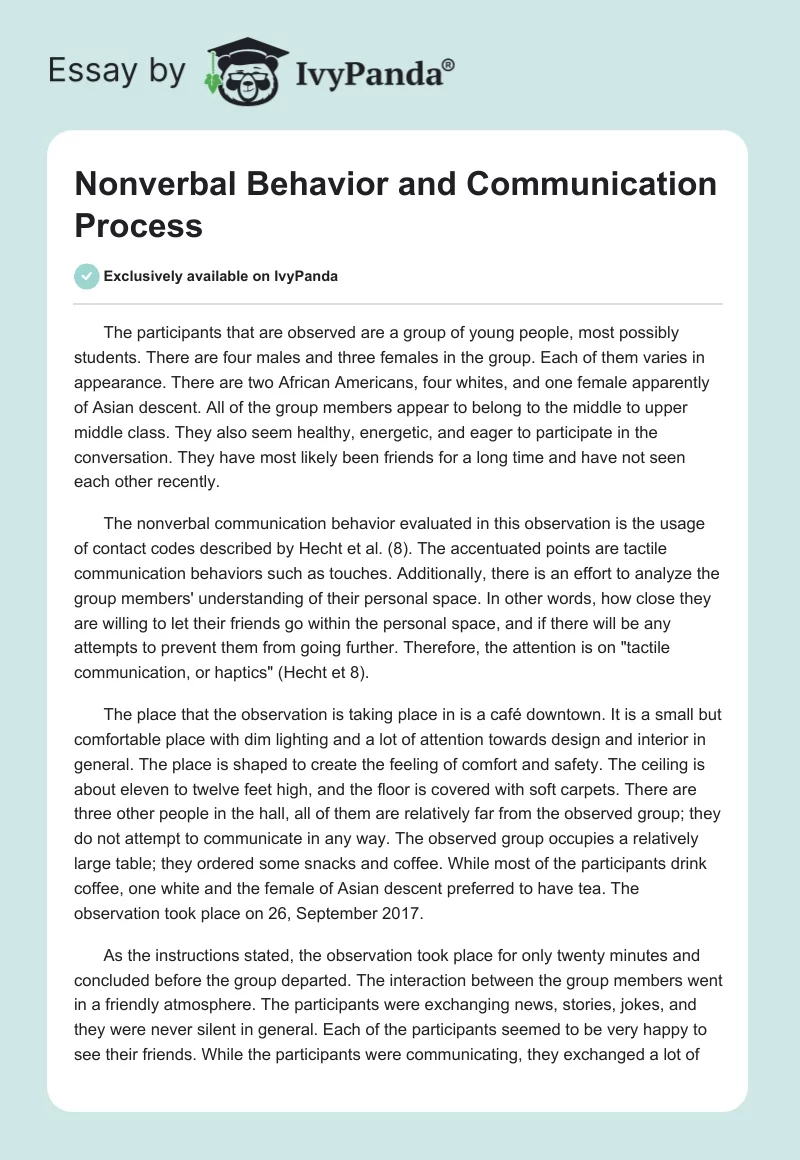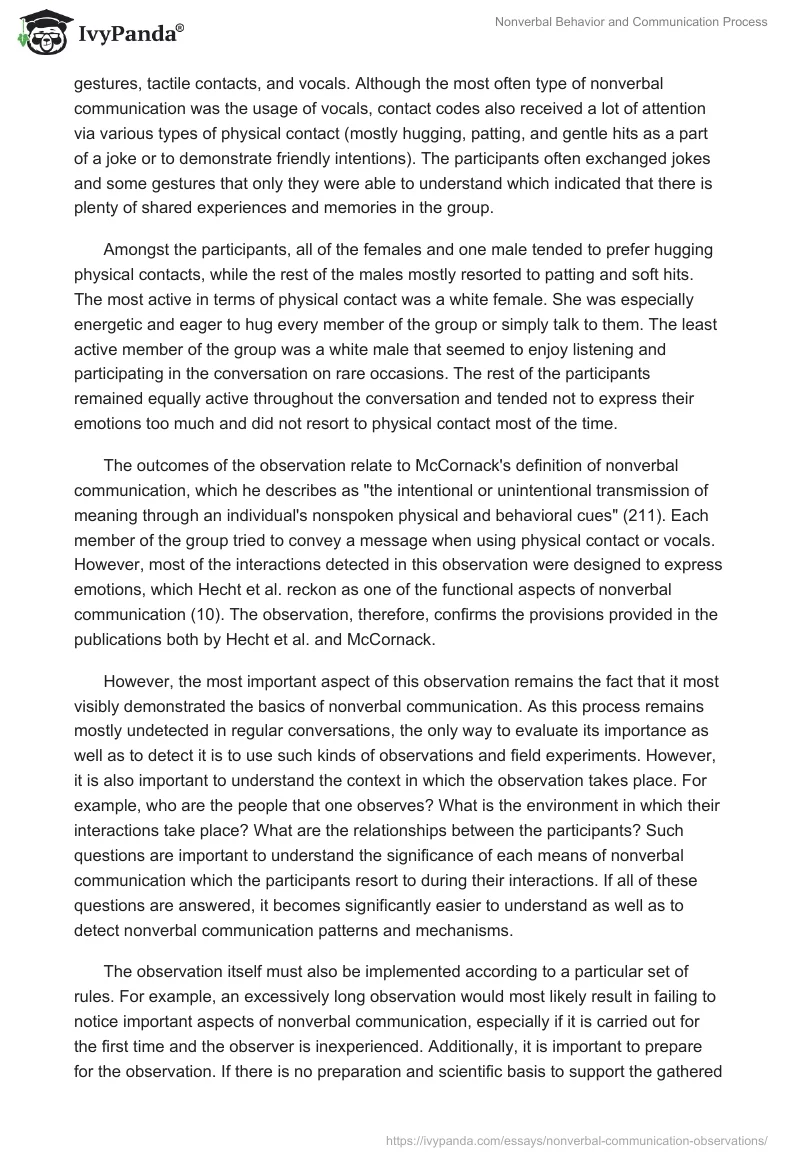The participants that are observed are a group of young people, most possibly students. There are four males and three females in the group. Each of them varies in appearance. There are two African Americans, four whites, and one female apparently of Asian descent. All of the group members appear to belong to the middle to upper middle class. They also seem healthy, energetic, and eager to participate in the conversation. They have most likely been friends for a long time and have not seen each other recently.
The nonverbal communication behavior evaluated in this observation is the usage of contact codes described by Hecht et al. (8). The accentuated points are tactile communication behaviors such as touches. Additionally, there is an effort to analyze the group members’ understanding of their personal space. In other words, how close they are willing to let their friends go within the personal space, and if there will be any attempts to prevent them from going further. Therefore, the attention is on “tactile communication, or haptics” (Hecht et 8).
The place that the observation is taking place in is a café downtown. It is a small but comfortable place with dim lighting and a lot of attention towards design and interior in general. The place is shaped to create the feeling of comfort and safety. The ceiling is about eleven to twelve feet high, and the floor is covered with soft carpets. There are three other people in the hall, all of them are relatively far from the observed group; they do not attempt to communicate in any way. The observed group occupies a relatively large table; they ordered some snacks and coffee. While most of the participants drink coffee, one white and the female of Asian descent preferred to have tea. The observation took place on 26, September 2017.
As the instructions stated, the observation took place for only twenty minutes and concluded before the group departed. The interaction between the group members went in a friendly atmosphere. The participants were exchanging news, stories, jokes, and they were never silent in general. Each of the participants seemed to be very happy to see their friends. While the participants were communicating, they exchanged a lot of gestures, tactile contacts, and vocals. Although the most often type of nonverbal communication was the usage of vocals, contact codes also received a lot of attention via various types of physical contact (mostly hugging, patting, and gentle hits as a part of a joke or to demonstrate friendly intentions). The participants often exchanged jokes and some gestures that only they were able to understand which indicated that there is plenty of shared experiences and memories in the group.
Amongst the participants, all of the females and one male tended to prefer hugging physical contacts, while the rest of the males mostly resorted to patting and soft hits. The most active in terms of physical contact was a white female. She was especially energetic and eager to hug every member of the group or simply talk to them. The least active member of the group was a white male that seemed to enjoy listening and participating in the conversation on rare occasions. The rest of the participants remained equally active throughout the conversation and tended not to express their emotions too much and did not resort to physical contact most of the time.
The outcomes of the observation relate to McCornack’s definition of nonverbal communication, which he describes as “the intentional or unintentional transmission of meaning through an individual’s nonspoken physical and behavioral cues” (211). Each member of the group tried to convey a message when using physical contact or vocals. However, most of the interactions detected in this observation were designed to express emotions, which Hecht et al. reckon as one of the functional aspects of nonverbal communication (10). The observation, therefore, confirms the provisions provided in the publications both by Hecht et al. and McCornack.
However, the most important aspect of this observation remains the fact that it most visibly demonstrated the basics of nonverbal communication. As this process remains mostly undetected in regular conversations, the only way to evaluate its importance as well as to detect it is to use such kinds of observations and field experiments. However, it is also important to understand the context in which the observation takes place. For example, who are the people that one observes? What is the environment in which their interactions take place? What are the relationships between the participants? Such questions are important to understand the significance of each means of nonverbal communication which the participants resort to during their interactions. If all of these questions are answered, it becomes significantly easier to understand as well as to detect nonverbal communication patterns and mechanisms.
The observation itself must also be implemented according to a particular set of rules. For example, an excessively long observation would most likely result in failing to notice important aspects of nonverbal communication, especially if it is carried out for the first time and the observer is inexperienced. Additionally, it is important to prepare for the observation. If there is no preparation and scientific basis to support the gathered evidence, the data becomes simply useless due to the fact that the observer will not be able to analyze it.
Works Cited
Hecht, Michael, et al. The Nonverbal Communication Reader: Classic and Contemporary Readings. Waveland Press, 1999.
McCornack, Steve. Reflect & Relate: An Introduction to Interpersonal Communication. Bedford/St. Martin’s, 2013.


 3.50
3.50
